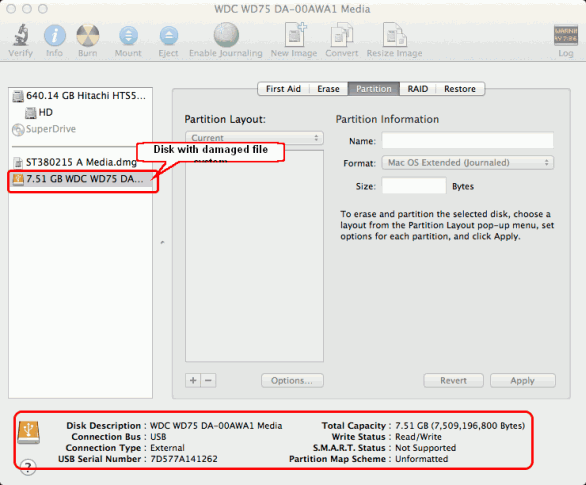

- #Can mac os disk utility fix exfat disks for mac#
- #Can mac os disk utility fix exfat disks mac os x#
- #Can mac os disk utility fix exfat disks code#
- #Can mac os disk utility fix exfat disks password#
- #Can mac os disk utility fix exfat disks windows#
One is to use a paid 3rd party tool to add NTFS write support to a Mac, such as Paragon’s NTFS for Mac tool.
#Can mac os disk utility fix exfat disks windows#
Then there is the inability to write files greater than 4gb on Fat32 and of course the complete lack of support on Windows for a Mac drive formatted with HFS+. First, there is the lack of NTFS write capability on Mac’s. You don’t need to reboot into any other environments unless there’s an error on a system drive you need to fix.When you work (or live) in an environment that consists of both Mac and Windows computers, it becomes a constant headache negotiating the different filesystems and their compatibility. However, if you do want to run a check, you can just do it with Disk Utility from within Mac OS X. Assuming everything is fine, you don’t need to regularly perform disk first-aid checks. The above steps should only be necessary if you’re experiencing errors with your Mac. Your Mac will reboot, returning you to the usual login screen. When the fsck command says your disk is okay, type the following command at the terminal and press Enter: Run the above fsck command over and over until you see a “** The volume appears to be OK” message. The fsck command may find additional errors after repairing the first batch of errors, so Apple recommends you run the fsck command again if it found and fixed problems. This indicates the fsck command found and fixed problems. If it found problems, you’ll see a “***** FILE SYSTEM WAS MODIFIED *****” message. The command will run through several phases of checks. When it’s done, you’ll see a message saying “** The volume appears to be OK” if everything is fine. Type the following command into the terminal and press Enter to start a file system check: You’ll enter single-user mode, which will provide you with a text-mode terminal. Restart it, and then press and hold the Command+S keys while it boots. To do this, start your Mac in single-user mode. This is the thing you should try last, as Disk Utility in the recovery environment may work better and be more capable. You don’t need to do this if any of the above steps worked. In some cases, even Safe Mode or Disk Utility in OS X Recovery won’t be enough to fix problems. You may need to boot your Mac into single-user mode and run the fsck (file system check) command the old-fashioned way.
#Can mac os disk utility fix exfat disks mac os x#
The Disk Utility interface is the same one you’ll see on your Mac OS X desktop, but run it from here and it’ll be able to repair problems with your system drive. Select the drive or partition you need to repair and click the “First Aid” button. In OS X Recovery, click the “Disk Utility” shortcut to launch the Disk Utility here. (If recovery mode doesn’t appear, restart your Mac and try pressing the keys again.) Your Mac will load straight into recovery mode. You’ll see a progress bar appear, and you can release the keys after you do. Press and hold the “Command+R” keys while it’s booting. Your Mac will be able to fix errors on your system drive from recovery mode. From there, you can use Disk Utility in the same way. The solution is to boot into a special recovery mode. It can’t make changes to that system drive while it’s running from it. This is because it’s running in “live mode” - examining the disk while the operating system is running from it. However, in some cases, your Mac may find disk or file system problems and be unable to repair them when you perform the above steps. Ideally, that should be the end of it - especially if you used the safe mode trick above. RELATED: 8 Mac System Features You Can Access in Recovery Mode When it’s done logging in and you see a desktop, the disk check is done. This will make the login process take longer than normal, so be patient.
#Can mac os disk utility fix exfat disks password#
Sign in with your password and your Mac will then check your disks. To do this, restart your Mac and hold “Shift” while it’s booting. Safe Mode, sometimes called “Safe Boot,” contains an automatic startup check and repair that can fix these problems. One simple way to fix such errors is to boot your Mac into Safe Mode.

RELATED: Troubleshoot Your Mac With These Hidden Startup Options
#Can mac os disk utility fix exfat disks code#
An exit code of “0” is a good thing, and means no errors were found.

You’ll see messages like “Storage system check exit code is 0” and “File system check exit code is 0” here. You can click the “Show Details” drop-down message to view detailed information about any errors it encounters. If it finds any errors, it will attempt to automatically fix them for you. It depends which you select in the sidebar.Ĭlick “Run” and your Mac will check the disk you selected for errors. You can either run the First Aid function on an entire disk, or an individual partition on that disk.


 0 kommentar(er)
0 kommentar(er)
